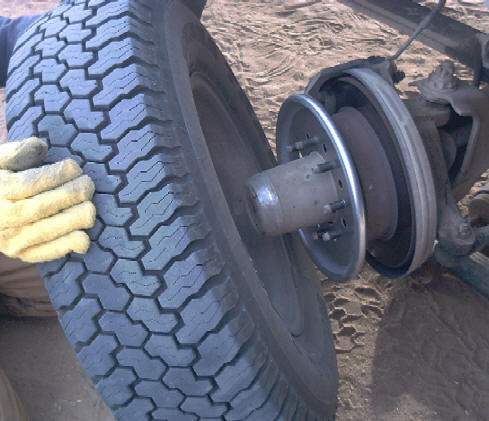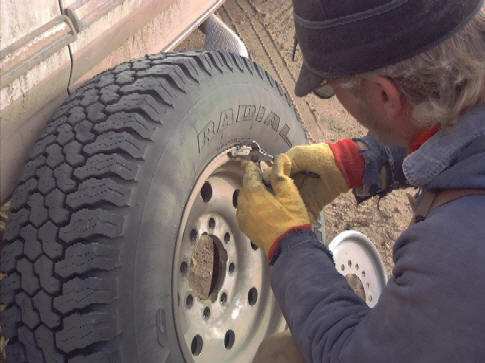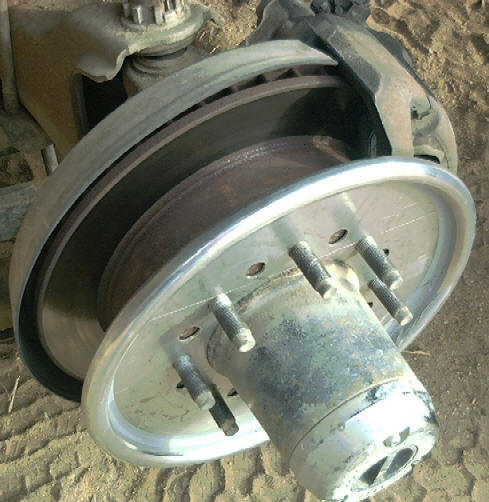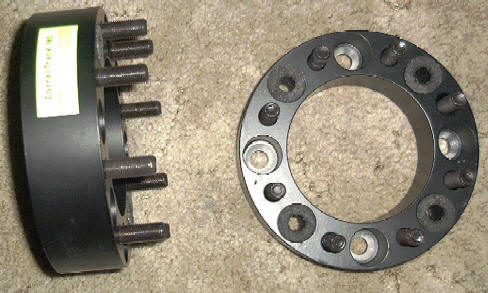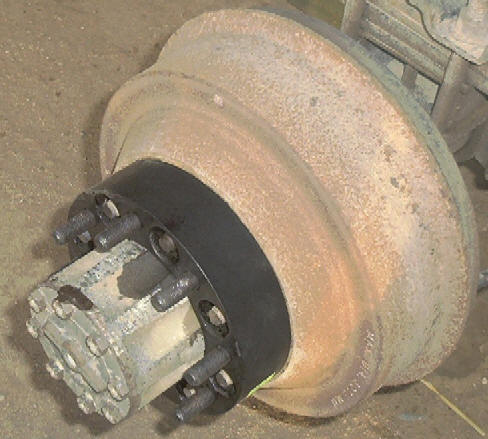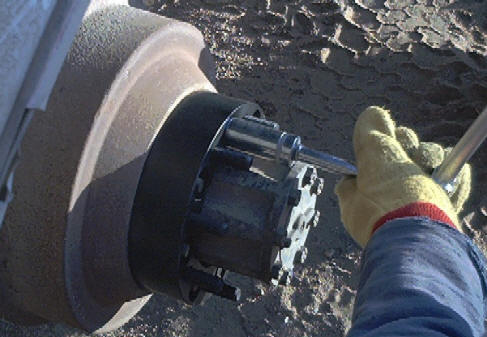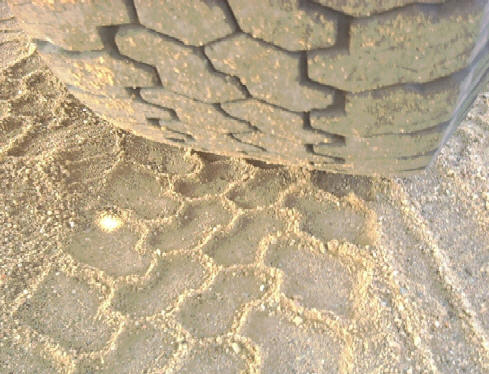|
Help handling your truck on country roads. It's time again for a truck accessories article. We all want a truck to go 300,000 miles and we think we'll live forever. When I sold trucks, I was surprised at how many folks had accidents in their trucks and unhurt, they came back to me to buy another truck! Trucks are safer than cars, don't let anybody fool you. I'm looking for ways and products to keep trucks and trailers safer. Growing up in the country and driving on gravel roads most of my life, gave me a unique way of evaluating how trucks and the accessories perform on dirt roads as well as the asphalt. These two products will make a big difference in the way your truck handles.
Next, CT Spacers
Correctrack rear-wheel alignment system can save lives and dramatically improve how your truck, van or SUV handles on gravel roads and pavement. After I spent a couple of weeks driving GM Quadrasteers and enjoying the stability with a trailer and on snowy icy roads, I dawned on me that part of the equation was the wider rear track of the Quadrasteer. A normal GM HD 2500 4x4 has the same rear axle as a 4x2 for obvious economic reasons. So the 4x4 rear axle is 2 inches narrower than the front. But the Quadrasteer rear axle is over 3 inches wider than the front axle. This reminded me of reading about Correctrack rear-wheel alignment system. Now I'm testing the spacers. There are several makes of trucks and vans that have this front to rear tracking deficit.
I've driven a few million miles on gravel roads, and I consider them the most dangerous type of surface. Dirt roads constantly change, with rain, snow, ruts, washboards, and gravel ribbons, it all can be different any day. The soft shoulder is always a danger trying to suck you down the ditch. The better handling your truck is, the more control you have for those ever changing conditions. You can feel the extra pull the ruts and gravel windrows put to your trucks steering and the bounce the washboards cause the rear axle of an empty truck. It was very simple and easy adding the Correctrack spacers. Once the spacers and wheels were torqued down, we were ready for the test. I watched the rear wheel tracking in the yard on the way to the road and looked like a match. Going down the same dirt roads, that I took before we added Correctrack, you could immediately tell the difference! The ruts didn't pull you and the washboard didn't make the back axle jump from side to side.
Turning corners was even different with less rear sliding. The truck was just easier to drive with less movement from the steering wheel, do to road feedback. And with a trailer on the truck you could feel the better control with less over steer to drive straight. I wouldn't of thought that I would see such a dramatic change in the effort it takes to handle the truck with the spacers added. Don't forget the pavement, you still have washboards, semi truck ruts, pot-holes and the cargo that falls out of the back of someone else's truck you're following. Evasive maneuvers can happen at anytime and you want a rear axle wide enough to help you control the fishtailing and leaning on turns. There is a reason sports cars, such as a Chevy Corvette, and stock cars have wider rear tires. It's all about control. Basically a rear axle that is narrower than the front axle doesn't even sound logical. Do you suppose it's a cheaper way to build trucks? Would you special order a truck that way on purpose? The older Heavy Duty Fords, 97 4x4 and back can have this problem, older Dodge trucks heavy duty 4x4 and most of the GM 4x4 Light Duty 2500 and Heavy Duty 2500 still today have a narrower rear axle tracking. Also GM 2500 4x4 Suburbans and Yukon XL's can have a narrower rear axle. GM did solve it with the newer full size vans. New Ford and Dodge vans today still have a narrower rear axle on the heavy duty vans your church and school use. It's easy to figure out, just go measure your truck and van to see if the rear is narrower. The question you might have with such a well built heavy duty alignment spacer, is will this cause strain to the rear axle bearings. The Correctrack spacer kit has completed a Daimler Chrysler K-1 durability test and warrants the rear axle bearings to 100,000 original miles. Know of any truck manufacture that does that? Call Correctrack Inc. for warranty details.
Measure your truck or van axles to see if it's tracking or constantly making new tracks. Do you suppose following the same track will help fuel mileage? If you want an edge on safety for your truck and trailer handling, this is something to try. You can even send them back if you don't like them. No risk, I like it! Correctrack Rear-Wheel Alignment System. We're adding the Correctrack to a new GMC HD 2500 next, stay tuned. By adding these two easy to ad products to your truck, Correctrack Rear-Wheel Alignment System and Centramatic Wheel Balancers, handling and safety will be noticeably improved. We all need an edge dealing with road surfaces we can't control. Stop by my website and visit sometime www.mrtruck.net. Kent Sundling (MrTruck) © Copyright 2002 H. Kent Sundling and MrTruck.net. All rights reserved including digital rights. |
